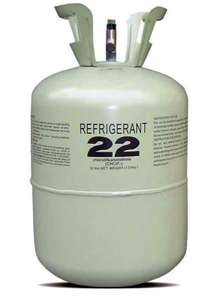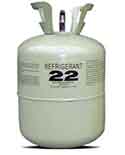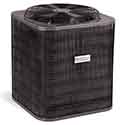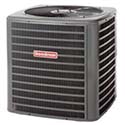HCFC-22 (also known as R-22) has been the refrigerant of choice for residential heat pump and air-conditioning systems for more than four decades. Unfortunately for the environment, releases of R-22, such as those from leaks, contribute to ozone depletion. In addition, R-22 is a greenhouse gas and the manufacture of R-22 results in a by-product (HFC-23) that contributes significantly to global warming. As the manufacture of R-22 is phased out over the coming years as part of the agreement to end production of HCFCs, manufacturers of residential air conditioning systems are offering equipment that uses ozone-friendly refrigerants. Many homeowners may be misinformed about how much longer R-22 will be available to service their central A/C systems and heat pumps. This fact sheet provides information about the transition away from R-22, the future availability of R-22, and the new refrigerants that are replacing R-22. This document also assists consumers in deciding what to consider when purchasing a new A/C system or heat pump, or when having an existing system repaired.
Availability of R-22
The Clean Air Act does not allow any refrigerant to be vented into the atmosphere during installation, service, or retirement of equipment. Therefore, R-22 must be recovered and recycled (for reuse in the same system), reclaimed (reprocessed to the same purity standard as new R-22), or destroyed. After 2020, the servicing of R-22-based systems will rely solely on recycled or reclaimed refrigerants. It is expected that reclamation and recycling will ensure that existing supplies of R-22 will last longer and be available to service a greater number of systems. As noted above, chemical manufacturers will no longer be able to produce, and companies will no longer be able to import, R-22 for use in new A/C equipment after 2010, but they can continue production and import of R-22 until 2020 for use in servicing existing equipment. Given this schedule, which was established in 1993, the transition away from R-22 to the use of ozone-friendly refrigerants should be smooth. For the next 10 years or more, R-22 should continue to be available for all systems that require R-22 for servicing.
Alternatives to R-22 in Residential Air Conditioning
As R-22 is gradually phased out, non-ozone-depleting alternative refrigerants are being introduced. Under the Clean Air Act, EPA reviews alternatives to ozone-depleting substances to evaluate their effects on human health and the environment. EPA has reviewed several alternatives to R-22 for household and light commercial air conditioning and has compiled a list of substitutes that EPA has determined are acceptable. One of these substitutes is R-410A, a blend of hydrofluorocarbons (HFCs) that does not contribute to depletion of the ozone layer, but, like R-22, contributes to global warming. R-410A is manufactured and sold under various trade names, including GENETRON AZ-20®, SUVA 410A®, Forane® 410A, and Puron®. An additional refrigerant on the list of acceptable substitutes for R-22 in residential air conditioners and other products is R-407C. Residential air conditioners and heat pumps using R-407C are not available in the U.S., but are commonly found in Europe. EPA will continue to review new non-ozone-depleting refrigerants as they are developed. Other approved replacement refrigerants include MO-99, and R422.




